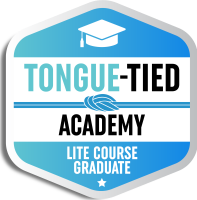
In the early 1800s, the dental literature began to recognize mouth breathing and abnormal swallowing patterns had detrimental effects on the dental structures. In 1906 the orthodontic community began to address this muscle dysfunction. MYO means muscle. FUNCTION means the specific, natural action or activity; to perform as expected or required. Orofacial myofunctional therapy introduces exercises related to tongue placement, breathing, and chewing to restore proper function and control. Orofacial myofunctional therapy can help address a wide range of health problems and conditions including:
- TMJ pain
- Head and Neck tension
- Clenching and Grinding
- Sleep apnea
- Upper Airway Resistance Syndrome
- Sleep disturbed breathing
- Tongue-tie
- Orthodontic and surgical relapse
- Craniofacial growth and appearance concerns
- Headaches and other facial and neck pain and tension
- Postural issues
The Four Goals of Orofacial Myofunctional Therapy are:
- Nasal breathing
- Lip seal
- Proper tongue posture
- Correct chewing pattern

Not just for kids…
Orofacial myofunctional therapy is also appropriate for adults. In many instances, a myofunctional disorder develops in response to late jaw growth, worsening of crooked teeth over time, or other reasons such as tooth loss. Therapy for adult patients is typically efficient. Adults of all ages are capable of achieving success in treatment.
Myofunctional therapy may be an attractive alternative treatment for sleep apnea. It is non-invasive, inexpensive, and has no major risks. For example, you may be able to avoid the use of continuous positive airway pressure (CPAP) or even surgery.


What does an assessment include?
This is a list of all the things I look at during a orofacial myofunctional assessment:
- Tonsils and adenoids
- Mouth breathing vs. nasal breathing
- Where the tongue rests in the mouth
- Tongue-tie
- Orthodontic treatment
- Jaw pain and dysfunction
- Head, neck and facial pain
- Snoring and sleep apnea
- Facial structure
- Habits such as thumb and finger sucking
The mouth is capable of change with DISCIPLINE and TIME. Exercises will tone the orofacial muscles, changing their shape, strength, range of motion, and their ability to coordinate with other muscles.
I teach clients exercises that relate to tongue placement, breathing, speaking, and chewing. I want the tongue to rest in the right place and the lips to stay closed. When these two simple things happen, troublesome symptoms disappear and the big picture problems around braces, jaw pain, and sleep apnea become much easier to treat.
Control of the new functions through self-monitoring and self-correction is necessary in order to develop new habits. It will take time to tone and retrain the muscles to help them function the right way. Long-term success will require perseverance with the therapy to prevent going back to old habits and patterns.
For success, exercises every day are necessary until improper habits are corrected and new habits are formed.
It takes commitment by the client, family ~ and some time. Treatment usually consists of a regular program of exercises over a 6 – 12 month period, although treatment length may vary depending on individual needs.




